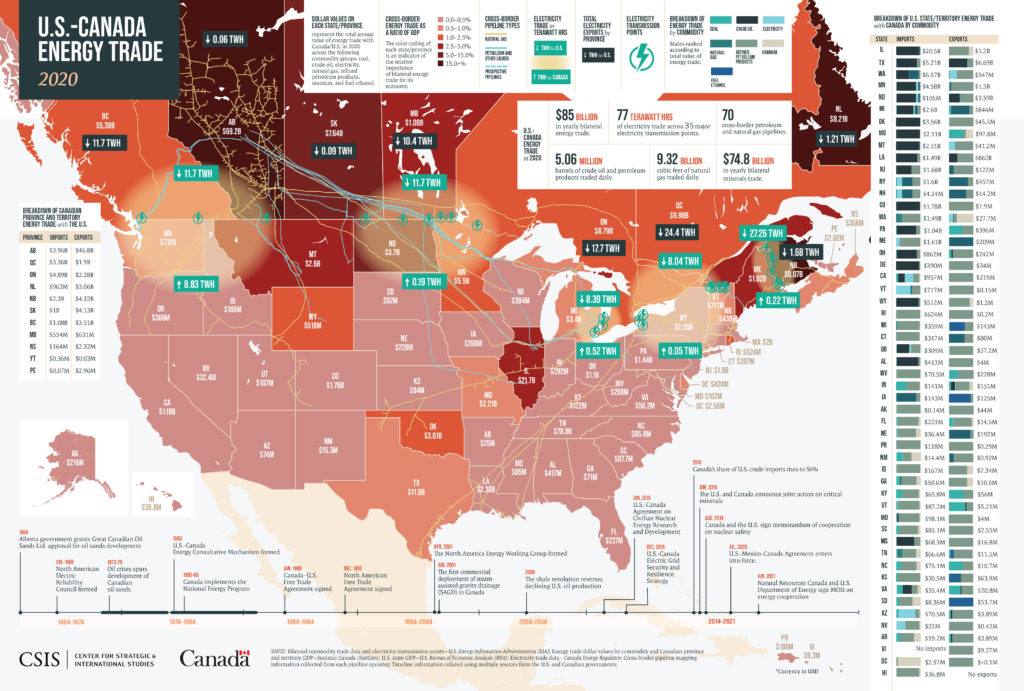Did you know that Canada is the largest supplier of energy to the U.S.? In 2021, Canada supplied the U.S. with 61% of its crude oil imports. And in 2020, Canada supplied the U.S. with 98% of its natural gas imports, 93% of its electricity imports, and 28% of its uranium purchases, helping power millions of homes, businesses and cities from coast to coast.
Russia’s unprovoked attack on Ukraine and the unacceptable use of energy as a weapon has exacerbated rising energy costs brought on during the pandemic by bottlenecks and inflation in global supply chains. Now more than ever, we are faced with the need to accelerate the transition to clean and reliable sources of energy to stabilize access to long-term energy supply, to increase energy security and autonomy in Canada and the United States, and to reduce emissions, both at home and abroad.
Thanks to the Center for Strategic and International Studies (CSIS), with data from the U.S. Energy Information Administration, the U.S. Bureau of Economic Analysis, Statistics Canada, and the National Energy Board, we can visualize our deeply connected and indispensable cross-border relationship, which makes up an integral part of overall bilateral trade.
The Map breaks down energy trade by commodity and ratio of state and provincial GDP, at times reaching billions of dollars. Energy travels across the border by natural gas and liquid fuel pipelines, as well as transmission points for electricity. For provinces like Alberta, New Brunswick, Newfoundland and Saskatchewan, and for states like Illinois, Montana and North Dakota, our bilateral energy trade makes up an important part of their GDP, helping fuel their economies and the livelihoods of people that live there.
The U.S. and Canada have a long history of working together to help power our communities. As we see on the Map’s timeline, our energy history spans nearly six decades, shaping our countries’ economies. “Thanks to historical as well as ongoing efforts to integrate the energy systems of the United States and Canada, North America is now one of the most energy-advantaged continents in the world,” said CSIS Associate Fellow Andrew Stanley, the Map’s principal architect. With our strong foundation, our energy relationship will continue to be fruitful for years to come. Our two countries are working together to lead the way on the future of the energy sector, investing in cutting-edge technologies like carbon capture, utilization and storage, renewables and hydrogen, promising global opportunities for a growing North American energy market.
